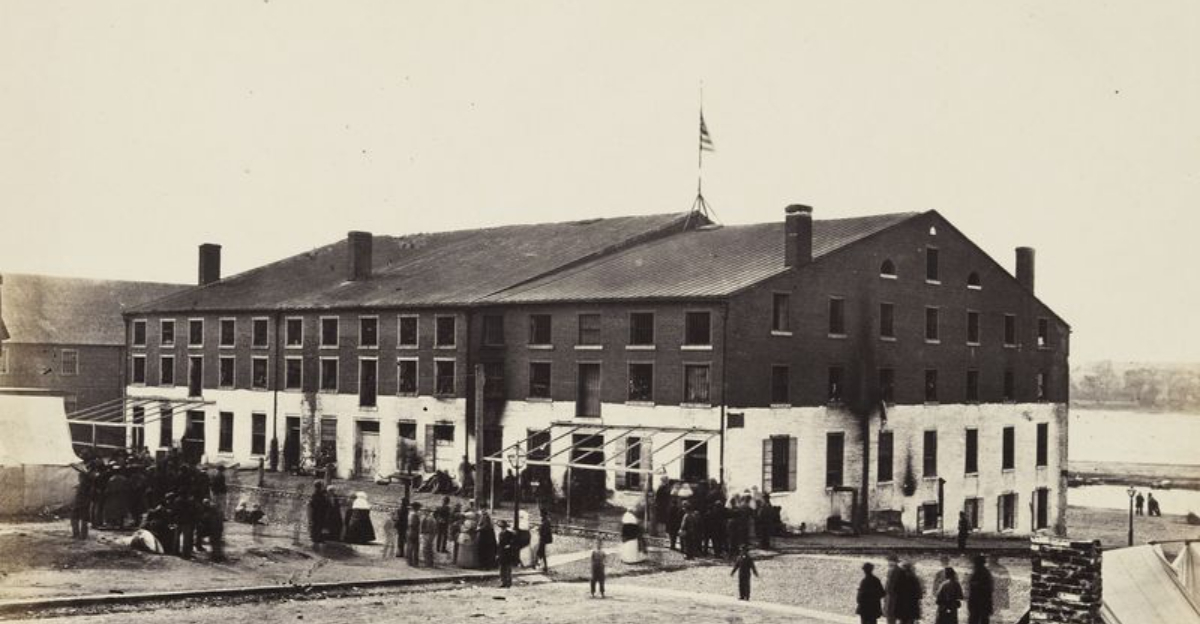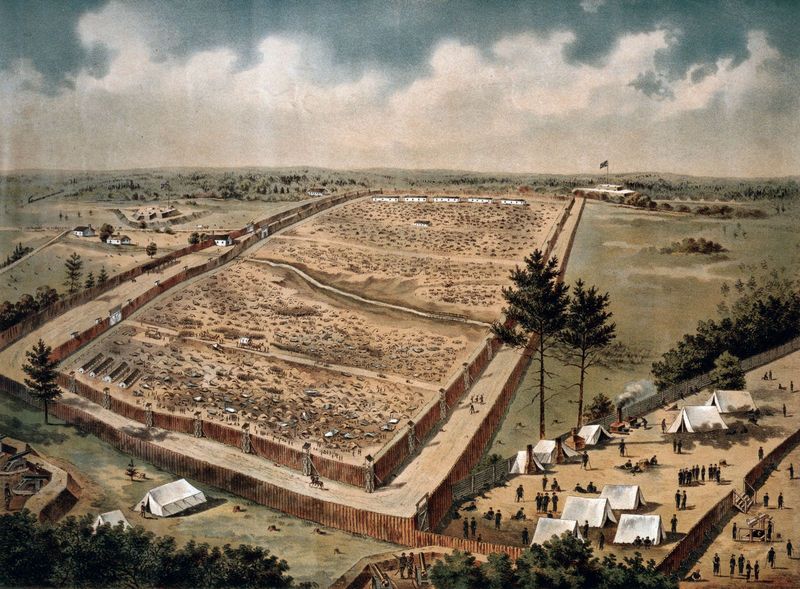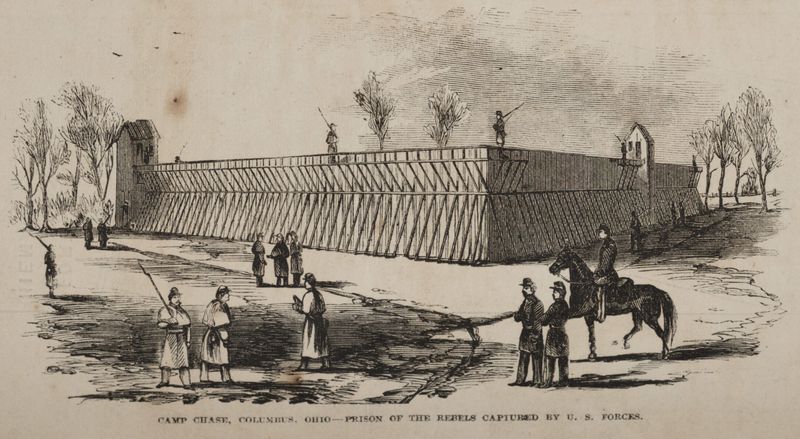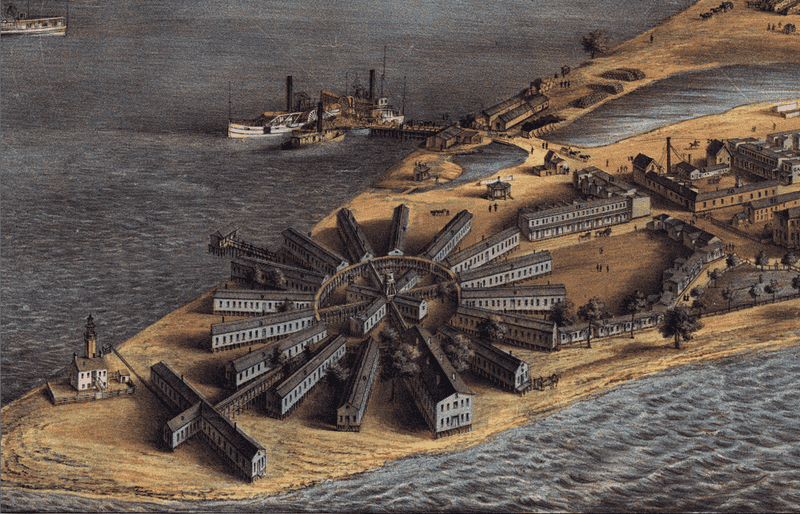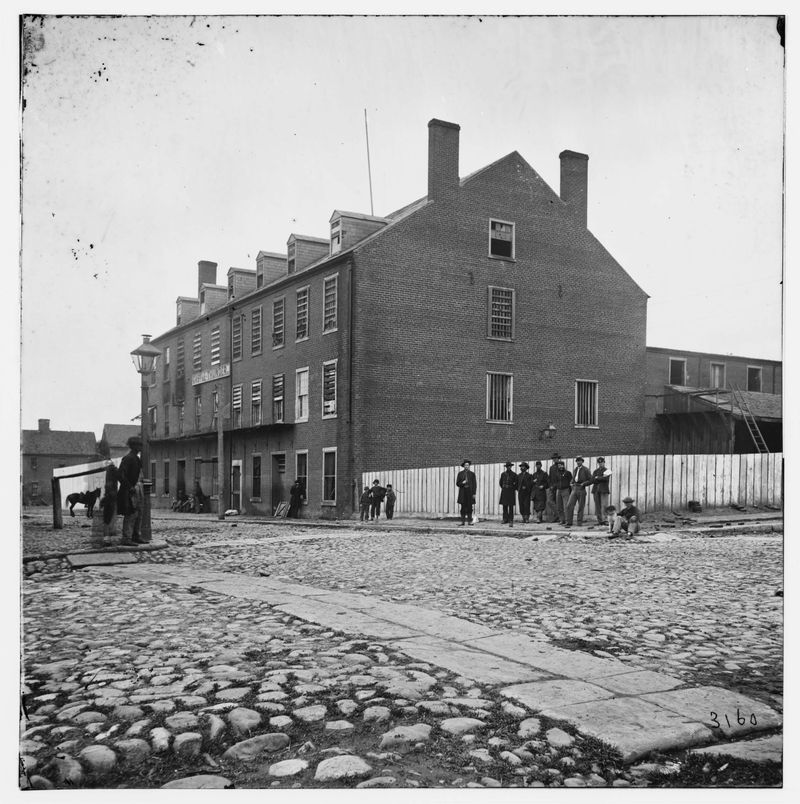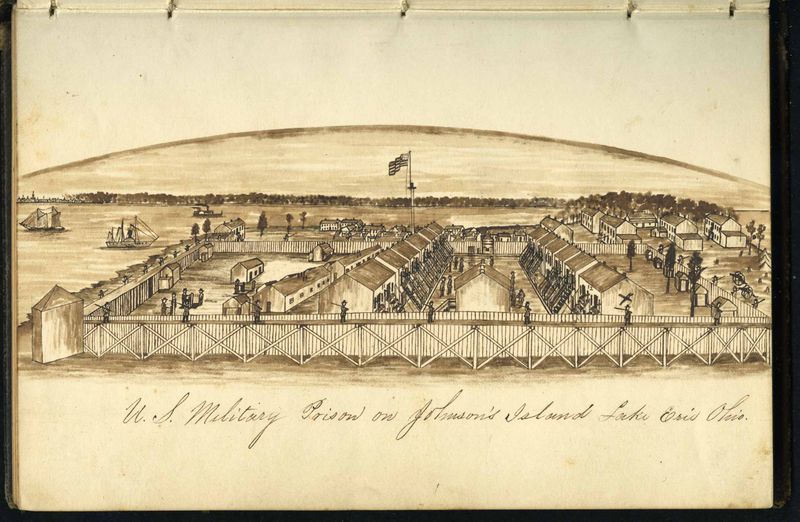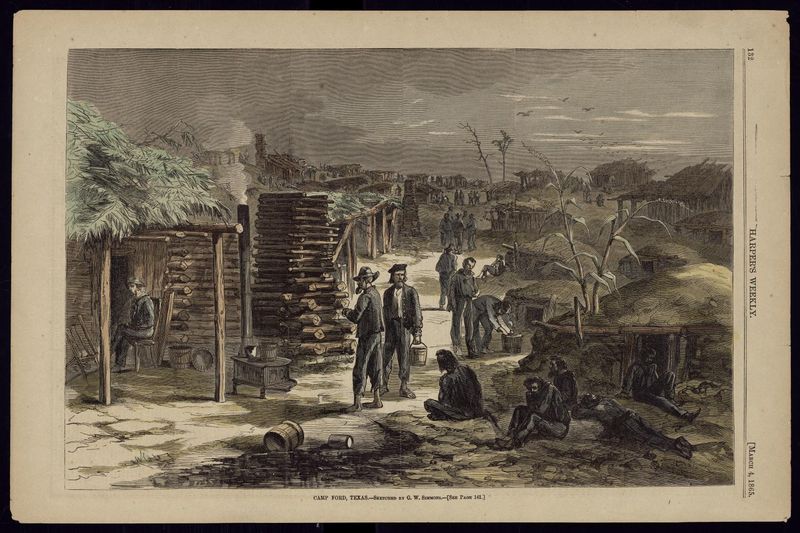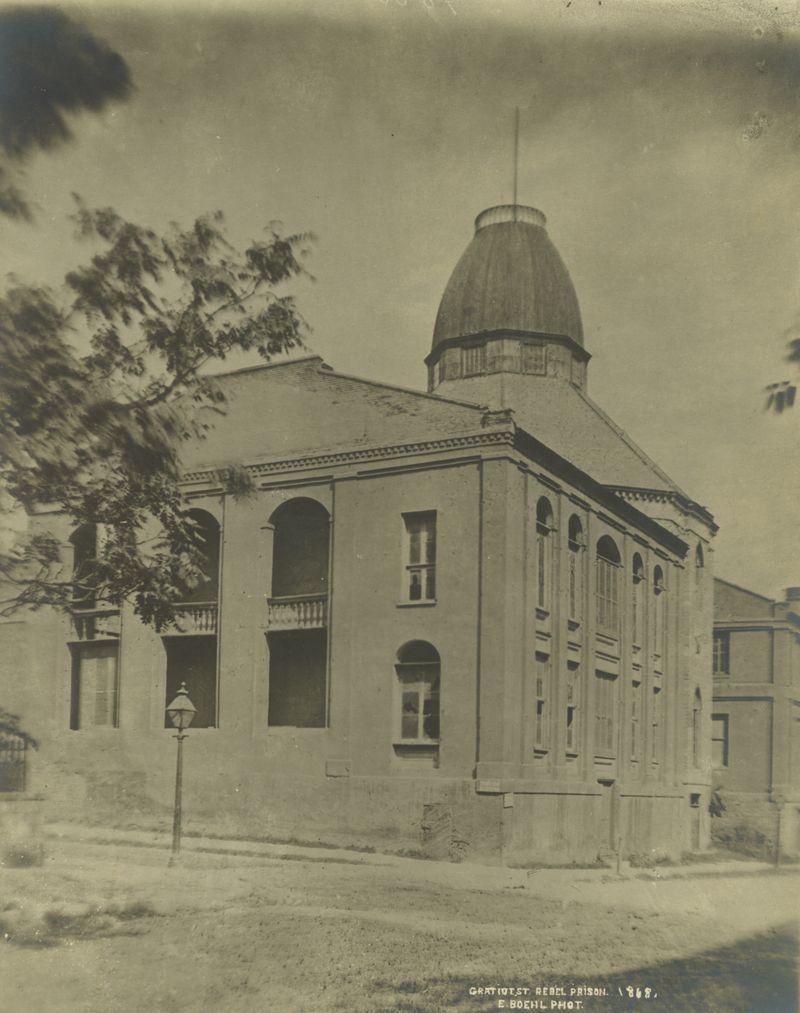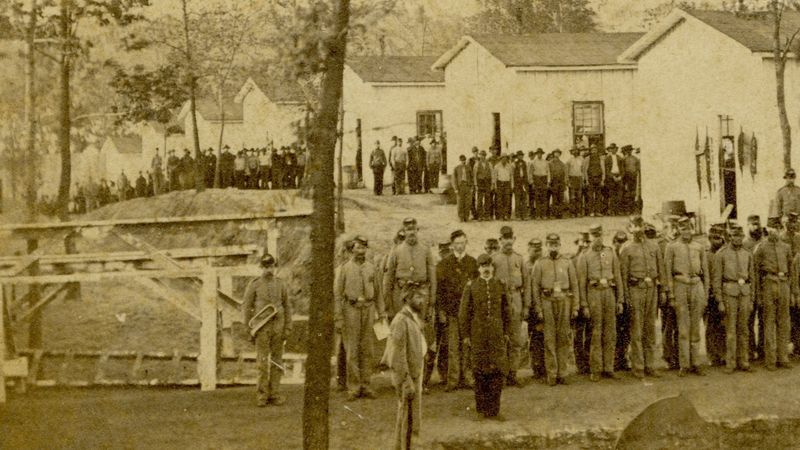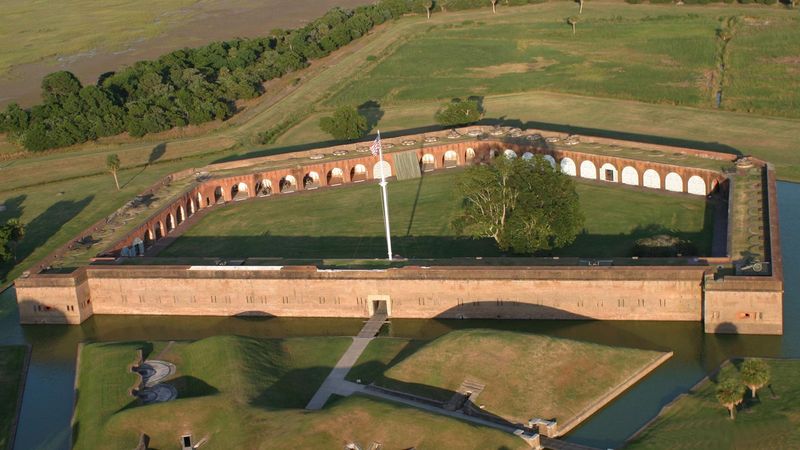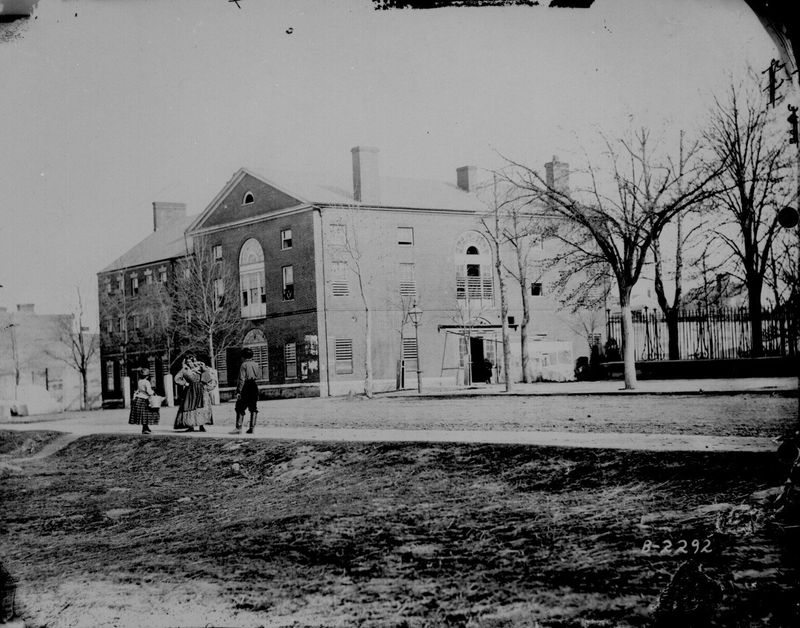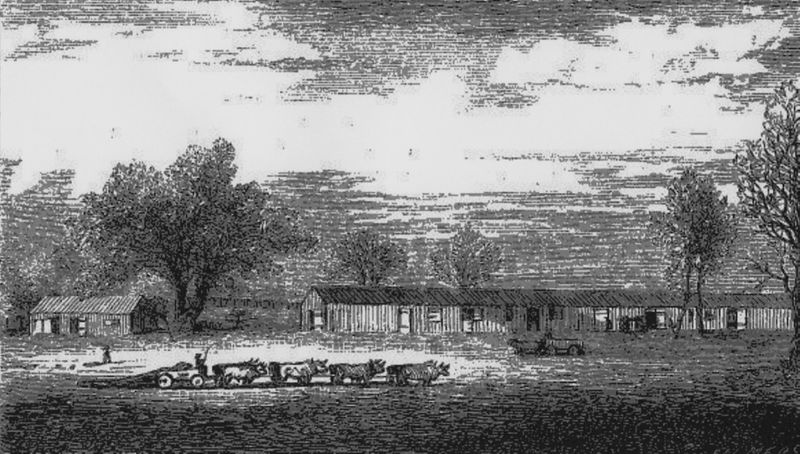The American Civil War wasn’t just fought on battlefields—it was also a brutal fight for survival inside overcrowded, unsanitary prison camps. Captured soldiers often faced grim conditions, with disease, starvation, and exposure as constant threats. Here are 20 of the most notorious Civil War prisons where survival was anything but guaranteed.
1. Andersonville Prison (Camp Sumter) – Georgia
Andersonville Prison, also known as Camp Sumter, stands as the deadliest Confederate prison. Overcrowded and under-supplied, it became synonymous with death. Nearly 13,000 Union soldiers perished here, succumbing to disease and malnutrition. The lack of shelter and contaminated water made survival a daily battle. Guards watched from sentry towers, as prisoners struggled to exist in squalor. The suffering experienced within its walls illustrates the harsh reality of war.
Yet, amidst the despair, the resilience of the human spirit emerged. Prisoners formed close bonds, sharing what little they had. This unity provided a glimmer of hope.
2. Elmira Prison – New York
Known grimly as “Hellmira,” Elmira Prison in New York was a Union-run camp with a notorious reputation. Frigid winters and poor shelter led to desperation among the inmates. The water supply was contaminated, contributing to a high death rate. The harsh conditions mirrored the internal strife faced by the country.
Soldiers, in their struggle, found strength in camaraderie, sharing stories of home to lift spirits. Despite adversity, hope flickered among them. Elmira serves as a reminder of the bleak hardships endured by many during the war, reflecting the broader human cost of conflict.
3. Camp Douglas – Illinois
In Chicago, Illinois, Camp Douglas served as a Union prison for Confederate soldiers and gained a reputation for its inadequate housing. Disease outbreaks were rampant, with smallpox and pneumonia taking a severe toll. The prisoners faced harsh winters, exacerbating their plight.
Amidst the suffering, acts of kindness emerged, with prisoners sharing scarce resources. These small gestures highlighted their humanity. Camp Douglas stands as a chilling reminder of the war’s harsh realities. It underscores the vulnerability of soldiers on both sides, trapped in a battle beyond their control, fighting for survival against the elements.
4. Belle Isle – Virginia
Located on a small island in the James River, Virginia, Belle Isle held Union prisoners in dire conditions. Exposure to the elements was relentless, with minimal shelter available. The environment was as much an adversary as the guards themselves. The island’s isolation added to the psychological toll.
Prisoners found solace in each other’s company, creating a sense of community amidst desolation. Their resilience against such adversity is a poignant narrative of the human spirit. Belle Isle, today a serene park, stands as a historical witness to the trials faced by those imprisoned during the Civil War.
5. Camp Chase – Ohio
Originally a training ground, Camp Chase in Ohio morphed into a prison for Confederates and political prisoners. High mortality rates were driven by rampant disease, with dysentery and typhoid fever common. The camp’s transformation mirrored the war’s shifting dynamics.
Prisoners grappled with harsh realities but clung to memories of home and hope for release. Their shared stories and dreams provided comfort. Camp Chase serves as a somber reminder of the Civil War’s broader impact. It highlights the personal struggles endured by those caught in the conflict’s tide, striving for survival against overwhelming odds.
6. Point Lookout – Maryland
Point Lookout in Maryland was among the largest Union prison camps, housing over 50,000 Confederate soldiers. The beachside conditions were harsh, with unsanitary living quarters and exposure to the elements. The camp’s sheer scale and severity left a lasting impression.
Inmates sought solace in the vastness of the bay, finding a strange beauty in their prison’s location. Their resilience against nature’s fury and human neglect is a story of endurance. Point Lookout remains a poignant symbol of the Civil War’s reach, reflecting the struggle for dignity amid adversity and hardship.
7. Fort Delaware – Delaware
Fort Delaware, initially a Union fortress, became notorious as a prison camp. Overcrowding was a persistent issue, with prisoners facing grim conditions. Contaminated drinking water and mosquito-infested marshlands added to their suffering.
Despite the bleakness, prisoners formed tight-knit communities, sharing tales of resilience and hope. Their spirit shone through the darkness, a testament to human tenacity. Fort Delaware’s history is a reminder of the Civil War’s complex legacy, illustrating the intersection of human endurance and the harsh realities of wartime imprisonment.
8. Libby Prison – Virginia
Libby Prison in Richmond, Virginia, was a warehouse turned detention center for Union officers. It was infamous for its deplorable conditions and overcrowding. The atmosphere was suffocating, with little room to breathe. The prison became well-known for daring escape attempts, highlighting the desperation within.
Friendships formed as officers supported each other. Despite the grim surroundings, these bonds provided emotional sustenance. Libby Prison’s legacy is a testament to the dire circumstances faced by captives. Its history reflects the complex nature of wartime imprisonment and the enduring spirit of those who endured it.
9. Castle Thunder – Virginia
Castle Thunder, located in Richmond, Virginia, was feared for its harsh discipline. It held a diverse group of prisoners, from Union spies to Confederate deserters and civilians accused of disloyalty. The atmosphere was tense, with strict rules governing daily life.
Prisoners navigated this environment by forming alliances and sharing limited resources. Their resilience against such adversity highlights the human capacity for adaptation. Castle Thunder’s legacy is one of fear and survival, serving as a poignant reminder of the internal conflicts that characterized the Civil War era.
10. Johnson’s Island – Ohio
Johnson’s Island in Ohio served as a prison for Confederate officers, offering slightly better conditions than most. Yet, winter hardships and disease remained constant threats. Its location on Lake Erie added both beauty and isolation.
Confederate officers found solace in intellectual pursuits, creating a vibrant camp culture. Their shared experiences fostered a sense of camaraderie. Johnson’s Island stands as a unique chapter in Civil War history, illustrating the complex dynamics of wartime imprisonment. The officers’ resilience against the odds is a testament to their enduring spirit and determination.
11. Salisbury Prison – North Carolina
Originally designed for 2,500 men, Salisbury Prison in North Carolina became a nightmare when it crammed in over 10,000. Disease and starvation claimed thousands, reflecting the dire conditions within its walls. The prison’s rapid growth mirrored the chaos of war.
Inmates clung to hope, finding strength in their shared plight. Stories of resilience and unity emerged, highlighting the human capacity for endurance. Salisbury Prison’s history is a stark reminder of the Civil War’s tragic toll, illustrating the human cost of conflict and the enduring spirit of those who faced its harshest realities.
12. Camp Morton – Indiana
Camp Morton in Indiana became notorious for its overcrowding and inadequate supplies. The winter months were particularly brutal, with freezing temperatures exacerbating the prisoners’ suffering. The camp’s conditions mirrored the broader struggles faced by those on both sides of the conflict.
Prisoners found solace in shared stories and memories, creating a sense of community amidst hardship. Their resilience against such adversity is a reminder of the human spirit’s strength. Camp Morton’s history reflects the complex realities of wartime imprisonment and the enduring hope that sustained its inmates.
13. Camp Ford – Texas
As the largest Confederate-run prison west of the Mississippi, Camp Ford in Texas was unique in being partially managed by the prisoners themselves. This autonomy provided a small measure of dignity amid adversity. Yet, disease and scarcity were constant companions.
Prisoners formed their own governance, creating a semblance of order. This self-management fostered unity and resilience. Camp Ford’s history is a testament to the human capacity for adaptation and survival. It highlights the diverse experiences of those imprisoned during the Civil War, reflecting both the challenges and triumphs of endurance.
14. Gratiot Street Prison – Missouri
Gratiot Street Prison in Missouri, once a medical college, became a detention center for Confederate soldiers and spies. The transition from academia to imprisonment was stark, mirroring the war’s chaotic impact. Conditions were often brutal, with strict discipline maintained.
Prisoners found solace in shared experiences, forming bonds of solidarity. Their resilience against adversity is a testament to human tenacity. Gratiot Street Prison’s history reflects the complex interplay of war and captivity, highlighting the personal struggles faced by those caught in its tide.
15. Rock Island Prison – Illinois
Rock Island Prison in Illinois was infamous for its harsh winters and poor sanitation. Confederate prisoners faced the dual threats of cold and disease, with thousands succumbing. The camp’s conditions underscored the relentless nature of war.
Amidst the suffering, acts of kindness emerged, with prisoners supporting each other. These gestures highlighted the enduring human spirit. Rock Island Prison’s history is a somber chapter in the Civil War, reflecting the challenges faced by those behind its walls. It serves as a reminder of the broader human cost of conflict and the resilience of the human soul.
16. Camp Lawton – Georgia
Camp Lawton in Georgia was briefly used as a Confederate prison but remains notable for its immense size and archaeological significance today. The camp’s short operational period belied its impact, with its vastness reflecting the scale of the conflict.
Archaeological digs have uncovered artifacts, shedding light on the lives of those imprisoned. These discoveries connect us to the past, illustrating the personal stories of endurance. Camp Lawton’s legacy is one of historical intrigue, reflecting the broader narrative of the Civil War and the enduring human spirit that navigated its trials.
17. Fort Pulaski – Georgia
After the Civil War, Fort Pulaski in Georgia housed Confederate officers known as the ‘Immortal Six Hundred.’ These prisoners were subjected to starvation diets in retaliation, reflecting the war’s harsh aftermath. The fort’s imposing walls stood as silent witnesses to their suffering.
Despite the grim conditions, the officers’ resilience shone through. Their camaraderie and dignity in the face of adversity are a testament to their enduring spirit. Fort Pulaski’s history is a poignant chapter in the Civil War’s legacy, illustrating the complex interplay of conflict and humanity.
18. Old Capitol Prison – Washington, D.C.
Old Capitol Prison in Washington, D.C., was known for its secrecy and rough treatment. It held a diverse mix of Confederate prisoners, spies, and political detainees, reflecting the complex nature of wartime loyalties. The prison’s austere architecture added to its foreboding atmosphere.
Inmates found ways to cope, forming bonds and exchanging stories. Their resilience against harsh treatment highlights the strength of the human spirit. Old Capitol Prison’s history is a testament to the intricate web of relationships and conflicts during the Civil War era, showcasing the enduring hope that sustained those within.
19. Castle Pinckney – South Carolina
Castle Pinckney in South Carolina, a small fort in Charleston Harbor, held Union prisoners early in the Civil War. The conditions were relatively decent compared to other prisons, providing a measure of respite for its inmates. The fort’s strategic location added a layer of security.
Prisoners found solace in the relative calm, forming connections with their captors. These interactions highlight the complex human dynamics of war. Castle Pinckney’s legacy is a unique chapter in Civil War history, reflecting the nuanced experiences of those held within its walls and the enduring spirit of hope.
20. Camp Groce – Texas
Camp Groce in Texas, a Confederate prison camp, was plagued by disease and high mortality. Union soldiers captured during the Red River Campaign faced grim conditions, with overcrowding exacerbating their plight. The camp’s remote location added to the prisoners’ isolation.
Despite adversity, the inmates found strength in their shared experiences, forming a community of resilience. Their stories of endurance highlight the human spirit’s capacity to withstand hardship. Camp Groce’s history is a reminder of the Civil War’s broader impact, illustrating the personal struggles faced by those caught in its tide.
